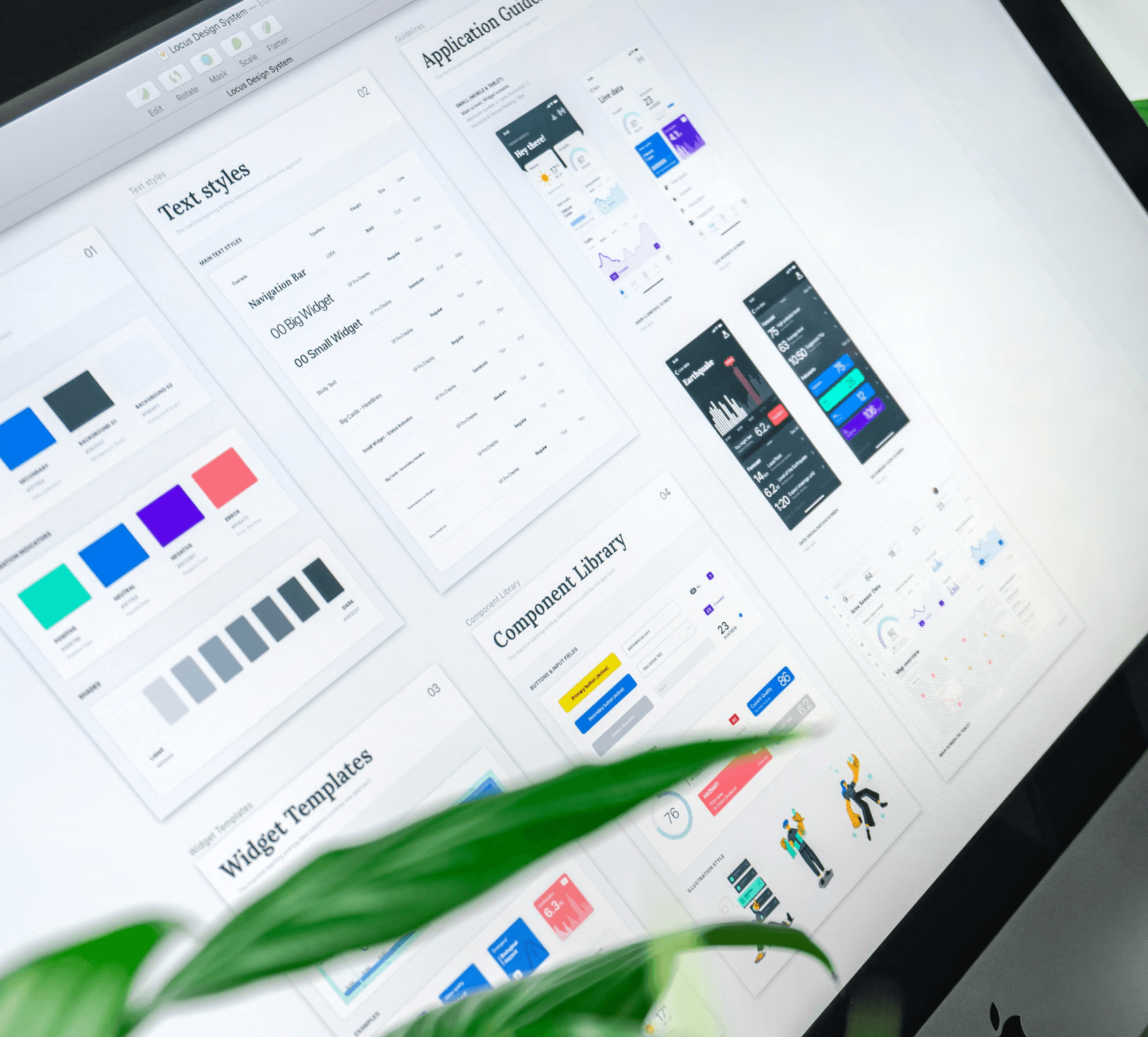
Anticipate accessibility as soon as possible
How I integrate accessibility soon as possible to avoid big cost and enhance users experience
The main challenge I face is the perception of accessibility as an optional add-on rather than an essential component of the product strategy. This perspective can lead to compromises that undermine the user experience for people with disabilities. For me, accessibility should be integrated from the outset and considered as an acceptance criterion for all user stories.
I start by incorporating contrast constraints into the design system, ensuring that the colors used provide adequate contrast for optimal readability. Information is not solely reliant on color or a single graphical element but is presented in multiple and accessible ways, with clear visual cues for users.
Text sizes adhere to WCAG AA guidelines, ensuring adequate readability at all levels. The choice of a legible font also contributes to accessibility by favoring sans-serif fonts known for their clarity.
I also ensure that component focuses are visible, with distinct cues for keyboard navigation users. Using variables in Figma standardizes components and minimizes errors, while detailed comments on mockups guide front-end teams in integrating behaviors and information hierarchy.
By integrating accessibility from the outset of the design process, we avoid additional costs and delays associated with later adjustments. In conclusion, accessibility should not be an afterthought but a fundamental aspect of creating inclusive products, essential for delivering an optimal user experience for all.

Anticipate accessibility as soon as possible
How I integrate accessibility soon as possible to avoid big cost and enhance users experience
The main challenge I face is the perception of accessibility as an optional add-on rather than an essential component of the product strategy. This perspective can lead to compromises that undermine the user experience for people with disabilities. For me, accessibility should be integrated from the outset and considered as an acceptance criterion for all user stories.
I start by incorporating contrast constraints into the design system, ensuring that the colors used provide adequate contrast for optimal readability. Information is not solely reliant on color or a single graphical element but is presented in multiple and accessible ways, with clear visual cues for users.
Text sizes adhere to WCAG AA guidelines, ensuring adequate readability at all levels. The choice of a legible font also contributes to accessibility by favoring sans-serif fonts known for their clarity.
I also ensure that component focuses are visible, with distinct cues for keyboard navigation users. Using variables in Figma standardizes components and minimizes errors, while detailed comments on mockups guide front-end teams in integrating behaviors and information hierarchy.
By integrating accessibility from the outset of the design process, we avoid additional costs and delays associated with later adjustments. In conclusion, accessibility should not be an afterthought but a fundamental aspect of creating inclusive products, essential for delivering an optimal user experience for all.

Anticipate accessibility as soon as possible
How I integrate accessibility soon as possible to avoid big cost and enhance users experience
The main challenge I face is the perception of accessibility as an optional add-on rather than an essential component of the product strategy. This perspective can lead to compromises that undermine the user experience for people with disabilities. For me, accessibility should be integrated from the outset and considered as an acceptance criterion for all user stories.
I start by incorporating contrast constraints into the design system, ensuring that the colors used provide adequate contrast for optimal readability. Information is not solely reliant on color or a single graphical element but is presented in multiple and accessible ways, with clear visual cues for users.
Text sizes adhere to WCAG AA guidelines, ensuring adequate readability at all levels. The choice of a legible font also contributes to accessibility by favoring sans-serif fonts known for their clarity.
I also ensure that component focuses are visible, with distinct cues for keyboard navigation users. Using variables in Figma standardizes components and minimizes errors, while detailed comments on mockups guide front-end teams in integrating behaviors and information hierarchy.
By integrating accessibility from the outset of the design process, we avoid additional costs and delays associated with later adjustments. In conclusion, accessibility should not be an afterthought but a fundamental aspect of creating inclusive products, essential for delivering an optimal user experience for all.

Anticipate accessibility as soon as possible
How I integrate accessibility soon as possible to avoid big cost and enhance users experience
The main challenge I face is the perception of accessibility as an optional add-on rather than an essential component of the product strategy. This perspective can lead to compromises that undermine the user experience for people with disabilities. For me, accessibility should be integrated from the outset and considered as an acceptance criterion for all user stories.
I start by incorporating contrast constraints into the design system, ensuring that the colors used provide adequate contrast for optimal readability. Information is not solely reliant on color or a single graphical element but is presented in multiple and accessible ways, with clear visual cues for users.
Text sizes adhere to WCAG AA guidelines, ensuring adequate readability at all levels. The choice of a legible font also contributes to accessibility by favoring sans-serif fonts known for their clarity.
I also ensure that component focuses are visible, with distinct cues for keyboard navigation users. Using variables in Figma standardizes components and minimizes errors, while detailed comments on mockups guide front-end teams in integrating behaviors and information hierarchy.
By integrating accessibility from the outset of the design process, we avoid additional costs and delays associated with later adjustments. In conclusion, accessibility should not be an afterthought but a fundamental aspect of creating inclusive products, essential for delivering an optimal user experience for all.

Anticipate accessibility as soon as possible
How I integrate accessibility soon as possible to avoid big cost and enhance users experience
The main challenge I face is the perception of accessibility as an optional add-on rather than an essential component of the product strategy. This perspective can lead to compromises that undermine the user experience for people with disabilities. For me, accessibility should be integrated from the outset and considered as an acceptance criterion for all user stories.
I start by incorporating contrast constraints into the design system, ensuring that the colors used provide adequate contrast for optimal readability. Information is not solely reliant on color or a single graphical element but is presented in multiple and accessible ways, with clear visual cues for users.
Text sizes adhere to WCAG AA guidelines, ensuring adequate readability at all levels. The choice of a legible font also contributes to accessibility by favoring sans-serif fonts known for their clarity.
I also ensure that component focuses are visible, with distinct cues for keyboard navigation users. Using variables in Figma standardizes components and minimizes errors, while detailed comments on mockups guide front-end teams in integrating behaviors and information hierarchy.
By integrating accessibility from the outset of the design process, we avoid additional costs and delays associated with later adjustments. In conclusion, accessibility should not be an afterthought but a fundamental aspect of creating inclusive products, essential for delivering an optimal user experience for all.
Other EXPERIENCES

How I manage technical context to craft accessible user journeys and bring insight to the product team
Other EXPERIENCES

How I manage technical context to craft accessible user journeys and bring insight to the product team
Other EXPERIENCES

How I manage technical context to craft accessible user journeys and bring insight to the product team
Other EXPERIENCES

How I manage technical context to craft accessible user journeys and bring insight to the product team
Other EXPERIENCES

How I manage technical context to craft accessible user journeys and bring insight to the product team



